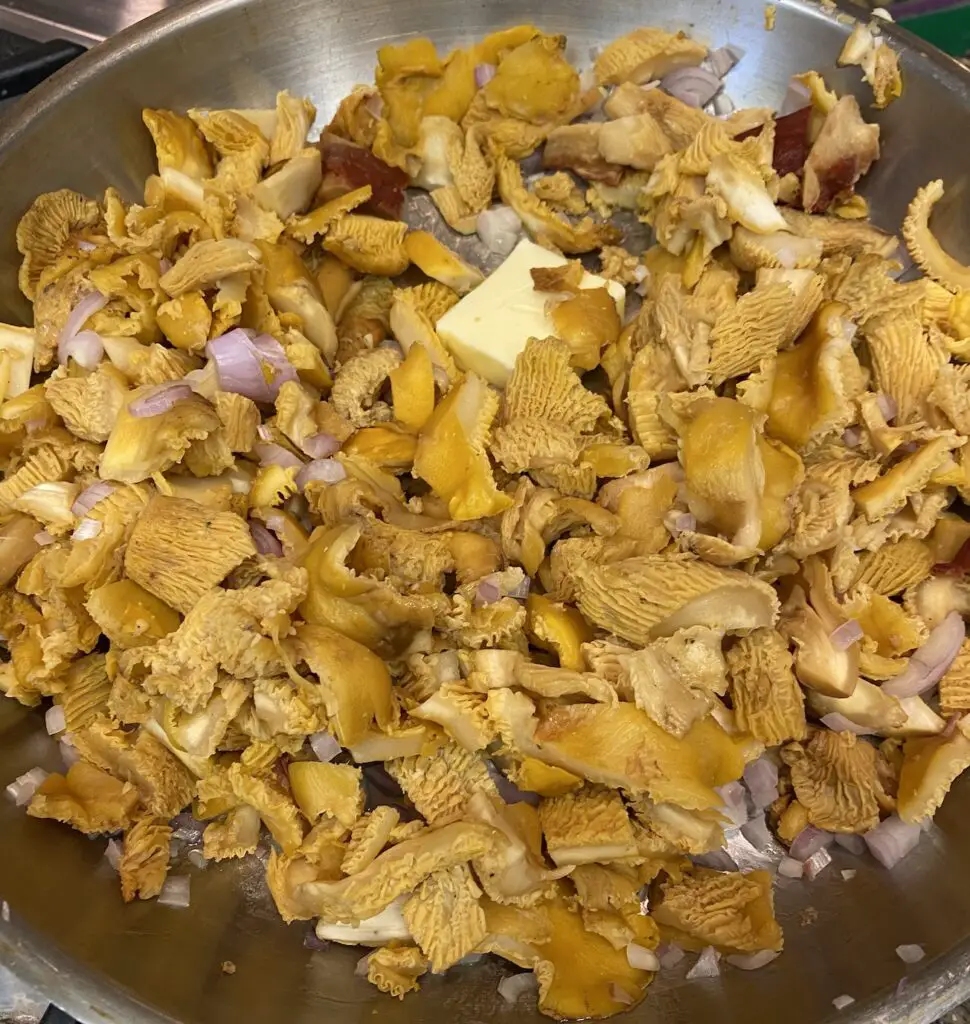
One of my favorite aspects of hunting is being able to harvest mushrooms as I explore and hunt for big game throughout western Washington.
Chanterelles are some of the best-tasting and widely available fall mushrooms with a season that can go from September all the way into December depending on where you are.
Mushroom foraging as a standalone harvest recreation activity is incredibly fun. However, when you combine mushroom foraging with a trip to the coast for razor clams, or being in the woods scouting or hunting for big game it becomes this tantalizing side benefit that can make any trip just that much more special.
As I’ve continued to expand my own proficiency in the various ways to get food from the land of the Pacific Northwest, I’ve realized that it’s really this pursuit of harvest recreation that so totally captures my heart and passion.
The connection to the land through harvesting its bounty is such a rewarding experience. Each week we plan our meals and visit our freezers to see what’s available and it’s such a connected and truly human experience to consume what we’ve harvested through our time spent in the woods or on the water.
Foraging for mushrooms doesn’t create the buzz that catching a large salmon, or shooting an incredible big game species like deer or elk, yet this harvest recreation pursuit is so accessible and rewarding all year long.
I will just put it out there now that I’m kind of a newbie when it comes to foraging for mushrooms. I’ve only been doing it for the past 15 months and I tend to stick to species of mushrooms that are fairly distinguishable from poisonous look-a-likes.
I also have a system of identification I use to lower my risk of harvesting the wrong specimen. I use the “Picture Mushroom” app, especially if I’m unfamiliar with the species. I also post the specimen on a Facebook foraging identification group. And if I really need to be sure, I will only eat a small amount of it, and wait 24-48 hours before consuming the rest. Don’t mess around with casually consuming mushrooms, they can mess you up.
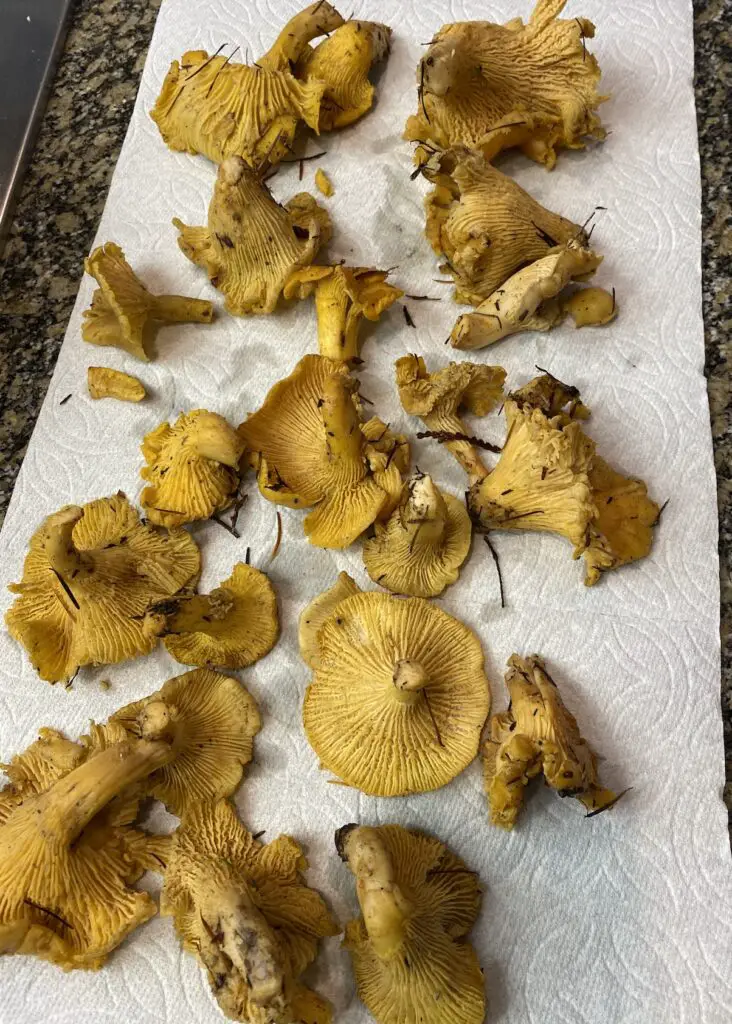
I’ve harvested quite a few chanterelles though, so I’m pretty comfortable with what I’m looking for as the critical identification markers.
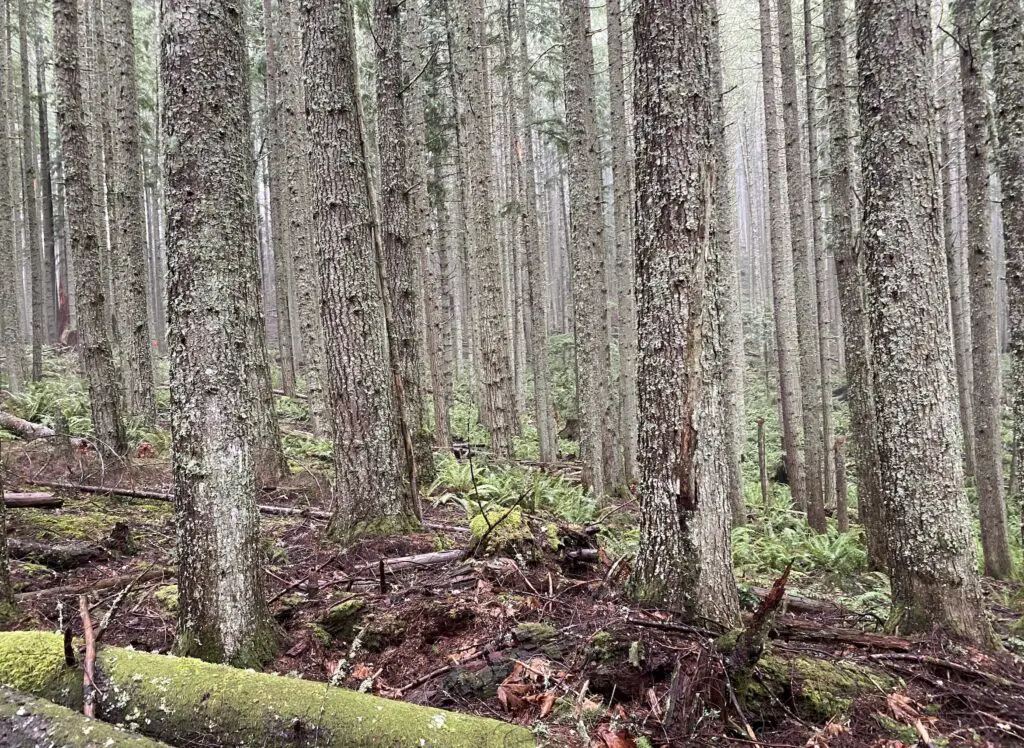
Chanterelles tend to grow in what’s called “second-growth forests”. There will be spacing between the trees and some undergrowth. I also tend to find elk/deer trails in these types of forests.
Many species of mushrooms will develop the fruiting body after the tree dies, so you will often find chanterelles around the dead remains of a Douglas fir tree (but not always).
On the western slopes of the cascades, I’ve found chanterelles closer to the 2000 ft elevation level or higher. On the coast, I’ve found chanterelles right at sea level. The mushroom-growing environment of the coastal regions of the PNW is truly prolific and foraging must be part of any trip you make to the coast.
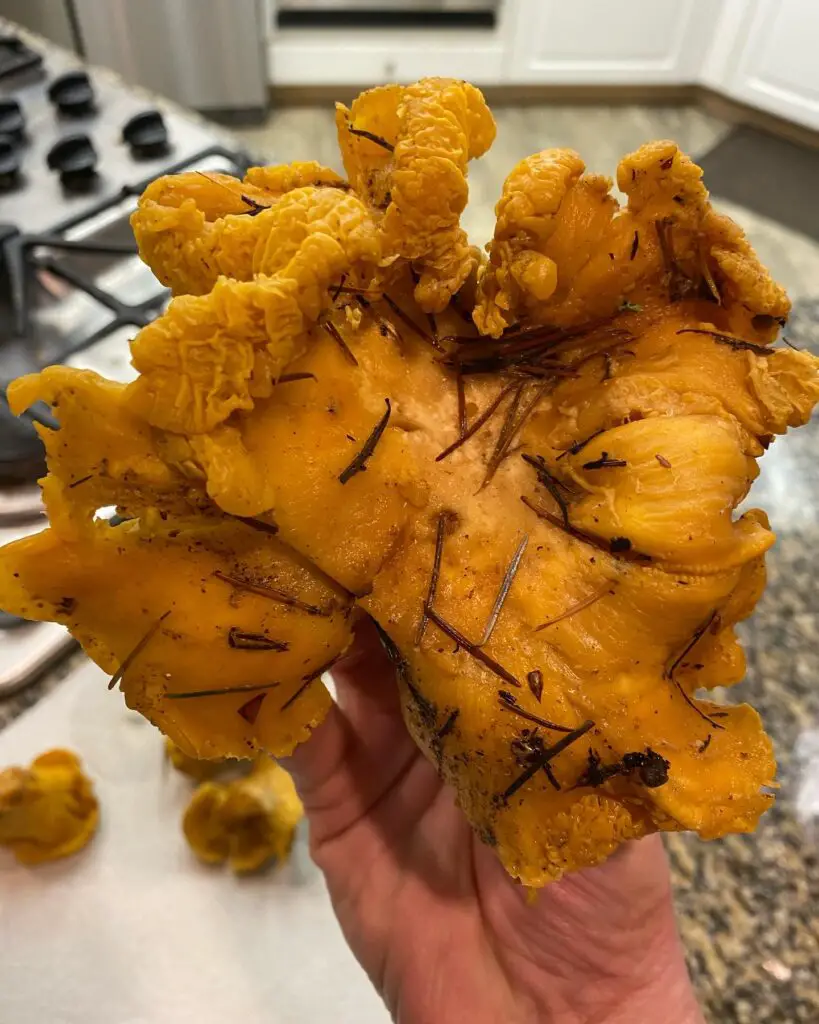
If you are hoping to take a walk in the woods and expecting to randomly spot chanterelles along the path, you may be consistently disappointed. You will often need to go off the trail, but if you have the right forest type, the right altitude for the region and you are around the right type of trees (firs), you will often find success.
Go find a stretch of public land with a trail system that gets you to the right elevation level and then just head off the trail. Make sure you have a good GPS unit or know how to read a map/compass system to avoid getting lost!
The linked GPS unit is what I use for hunting and mushroom foraging.
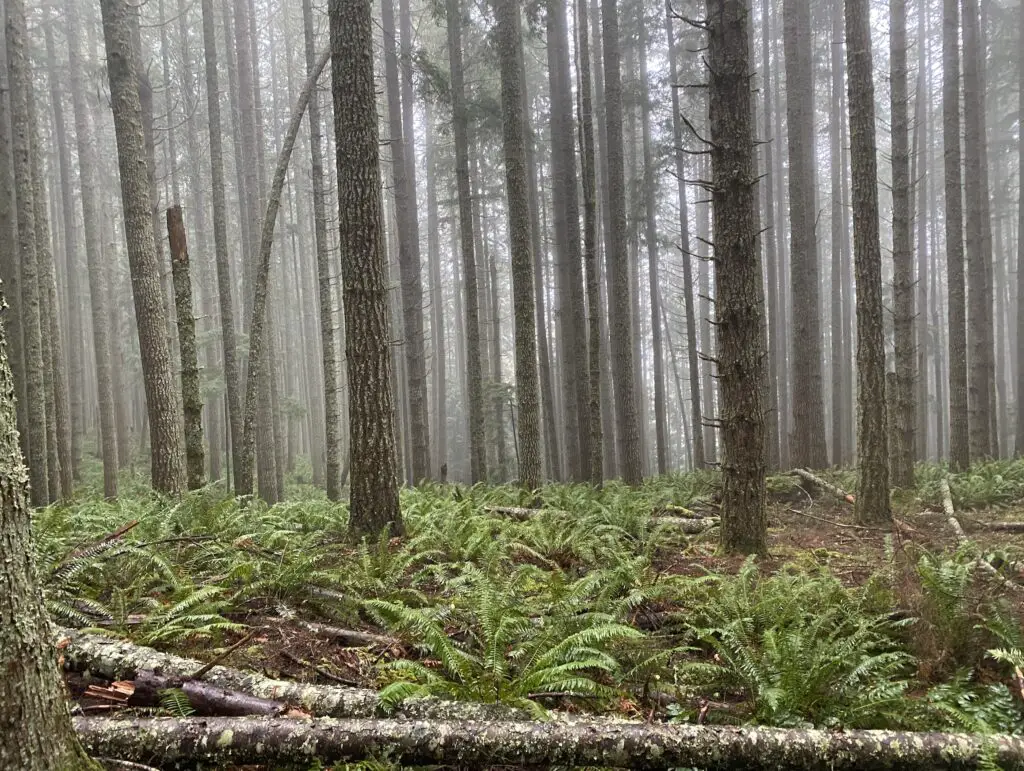
Here’s an example of the type of forest you will find chanterelles within. Notice the spacing, and the undergrowth (sword ferns). Not only was this a great place to find elk sign, but there were chanterelles everywhere. I’ve hiked through many forests on the western slope with these characteristics and had the same successful result of finding chanterelles.
You can also visit forests that look like this at lower altitude and not find any chanterelles so I know the altitude is a factor in certain regions (such as the western cascades).
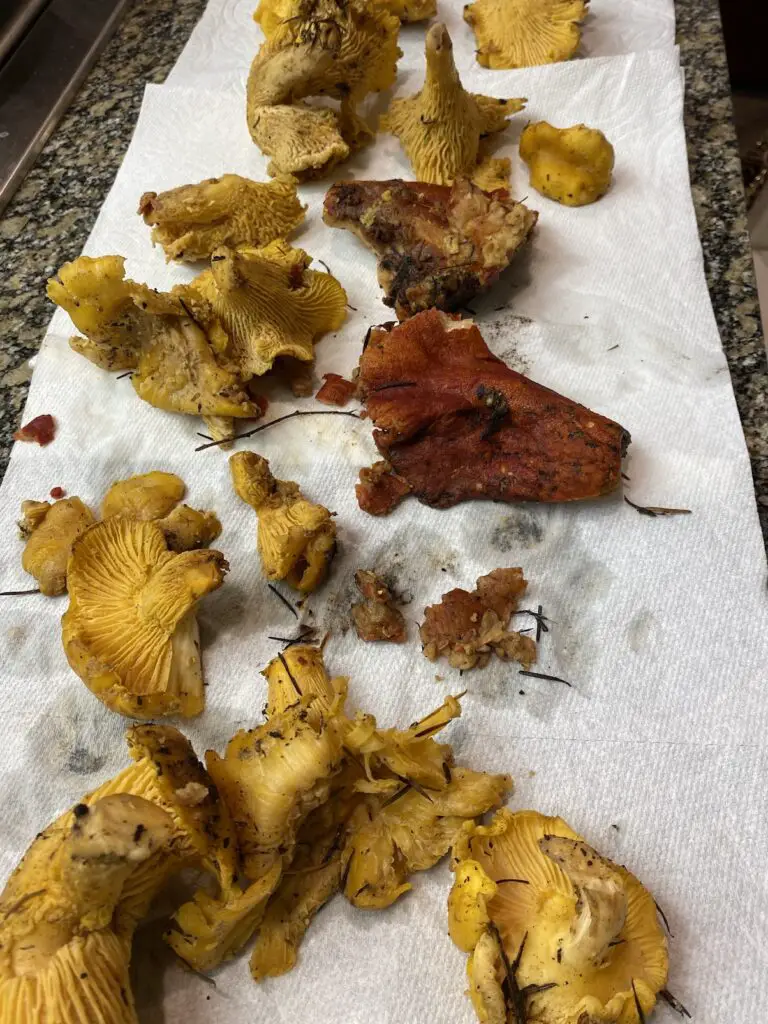
I will also tend to find lobster mushrooms in the same areas as the chanterelles.
So you’ve harvested a bunch of chanterelles and you don’t know what to do with them? We will dry them out for 24 hours on paper towels per the above and then clean them with a toothbrush and cold slow running water. I will then put them in a dish on paper towels in layers and store them in the fridge. Chanterelles should be consumed or frozen within a week of harvesting.
We will cook up the chanterelles prior to freezing them and then add them to a muffin pan to be frozen as “pucks”. We can rehydrate these pucks and use them in a variety of tasty meals to fully experience the great taste of the chanterelle mushroom.